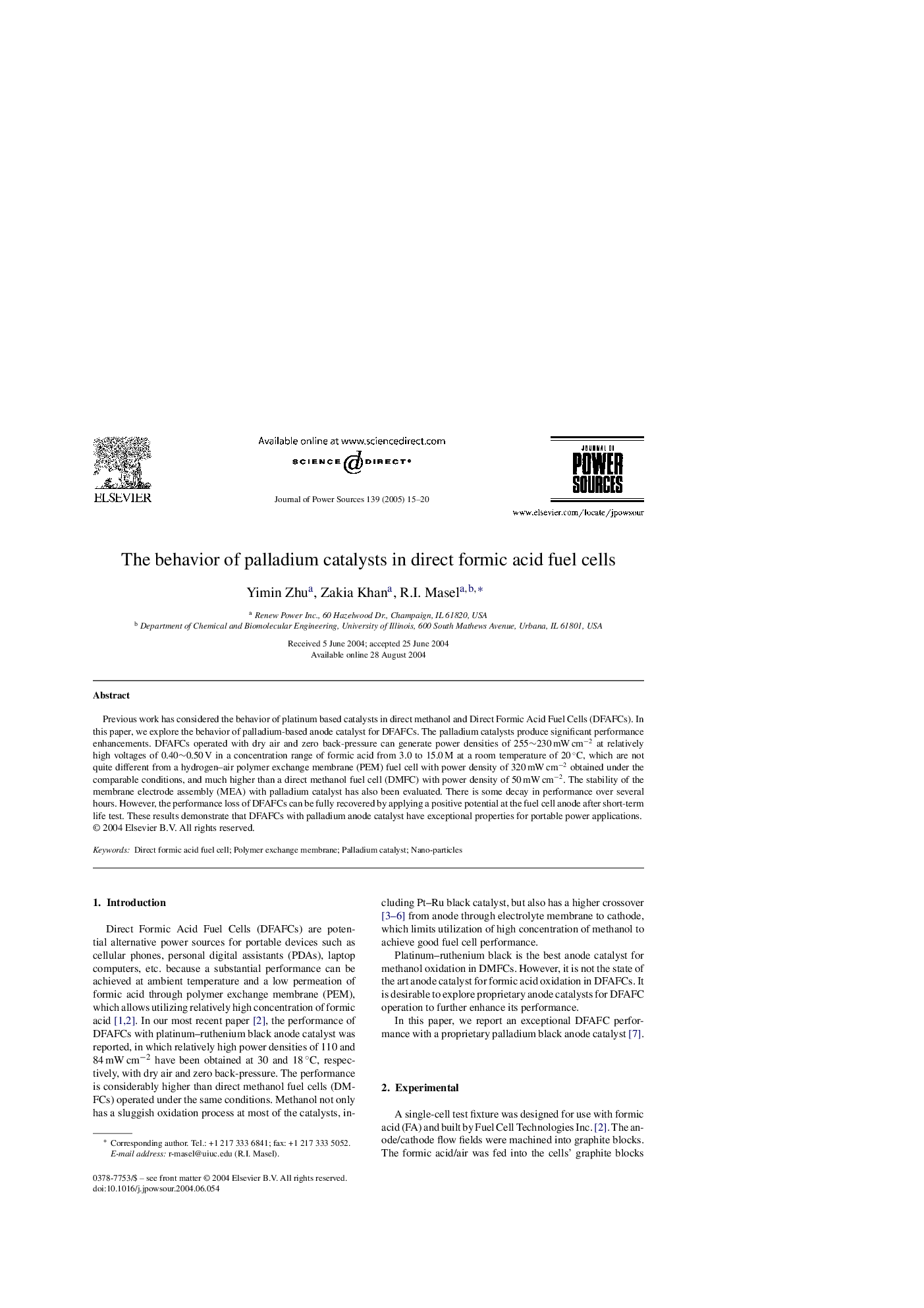| Article ID | Journal | Published Year | Pages | File Type |
|---|---|---|---|---|
| 9760493 | Journal of Power Sources | 2005 | 6 Pages |
Abstract
Previous work has considered the behavior of platinum based catalysts in direct methanol and Direct Formic Acid Fuel Cells (DFAFCs). In this paper, we explore the behavior of palladium-based anode catalyst for DFAFCs. The palladium catalysts produce significant performance enhancements. DFAFCs operated with dry air and zero back-pressure can generate power densities of 255â¼230 mW cmâ2 at relatively high voltages of 0.40â¼0.50 V in a concentration range of formic acid from 3.0 to 15.0 M at a room temperature of 20 °C, which are not quite different from a hydrogen-air polymer exchange membrane (PEM) fuel cell with power density of 320 mW cmâ2 obtained under the comparable conditions, and much higher than a direct methanol fuel cell (DMFC) with power density of 50 mW cmâ2. The stability of the membrane electrode assembly (MEA) with palladium catalyst has also been evaluated. There is some decay in performance over several hours. However, the performance loss of DFAFCs can be fully recovered by applying a positive potential at the fuel cell anode after short-term life test. These results demonstrate that DFAFCs with palladium anode catalyst have exceptional properties for portable power applications.
Related Topics
Physical Sciences and Engineering
Chemistry
Electrochemistry
Authors
Yimin Zhu, Zakia Khan, R.I. Masel,
